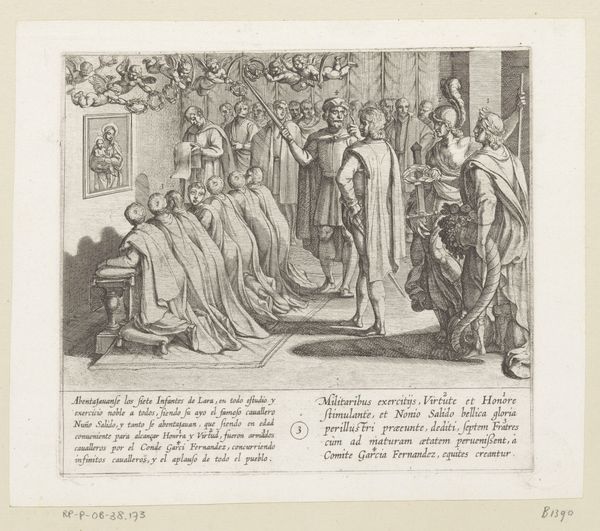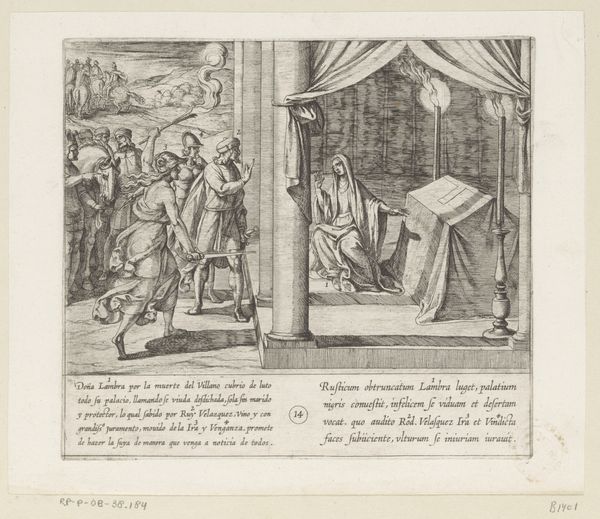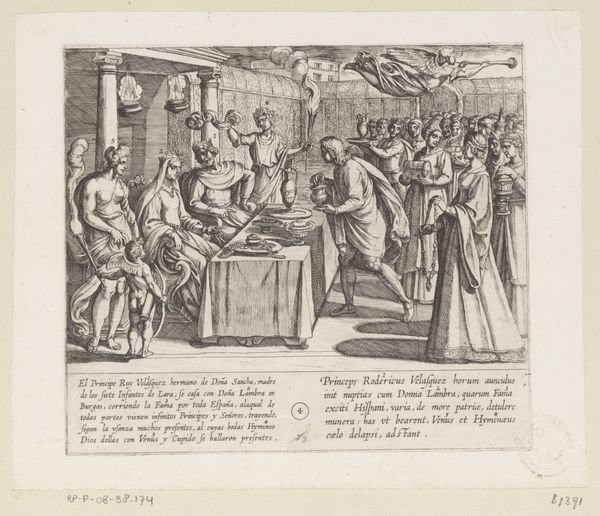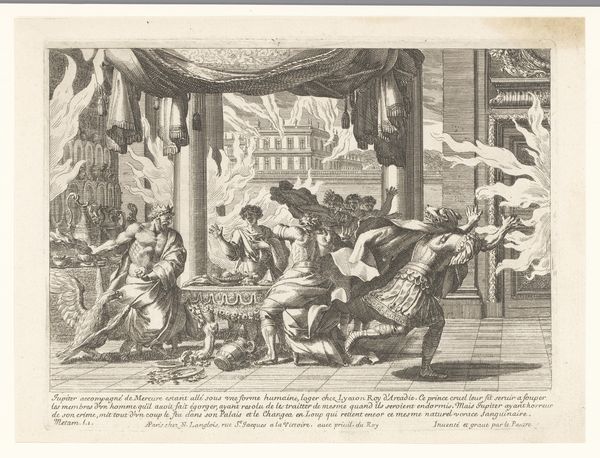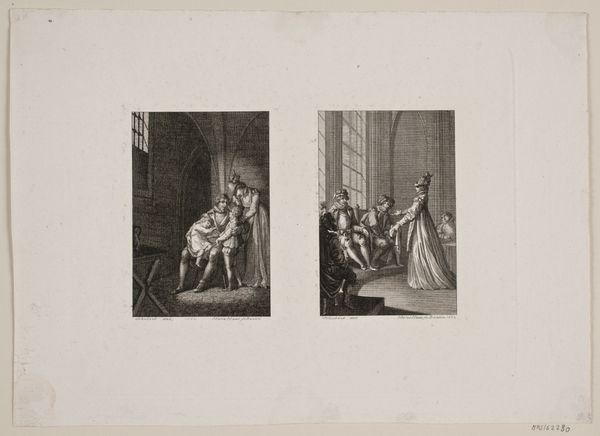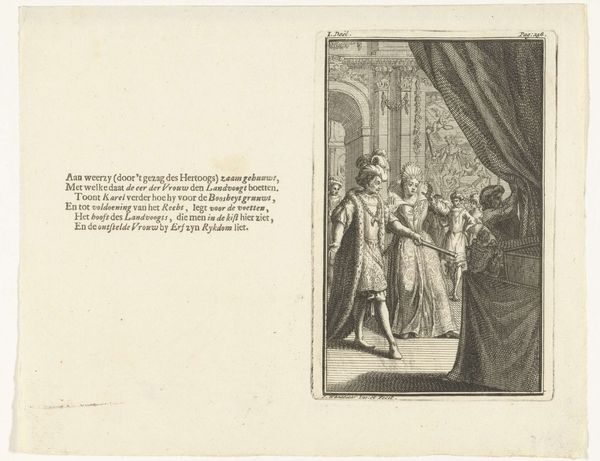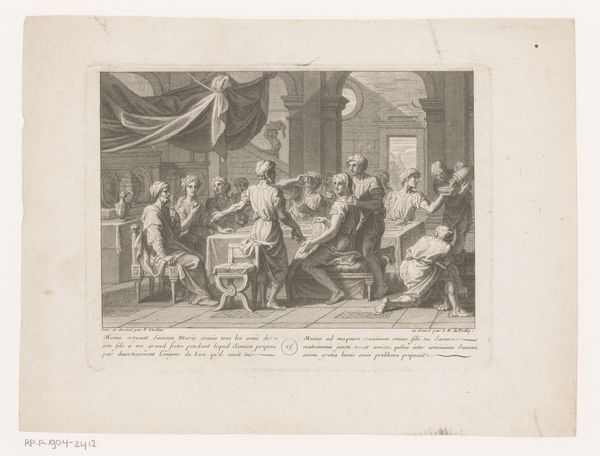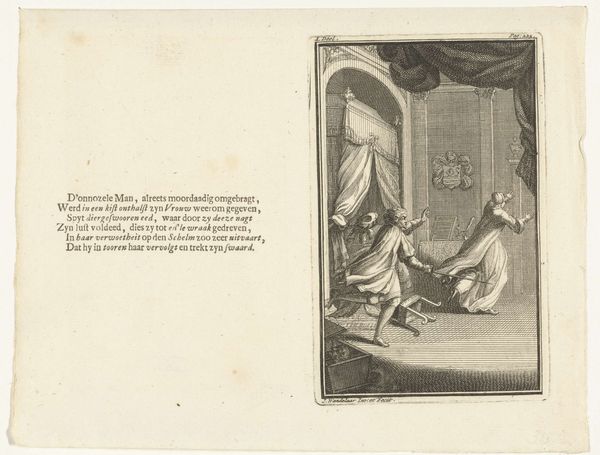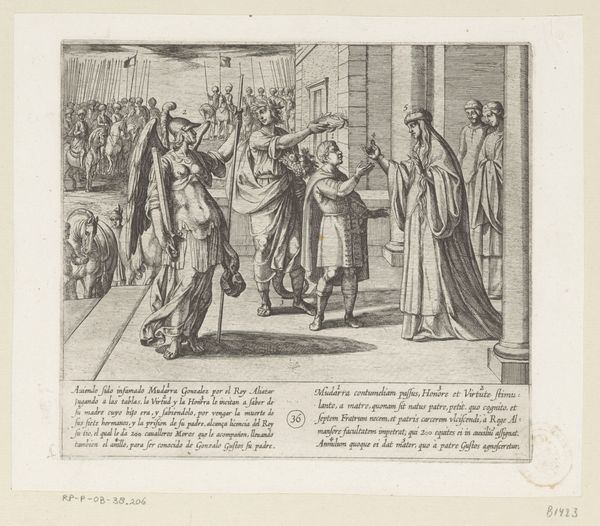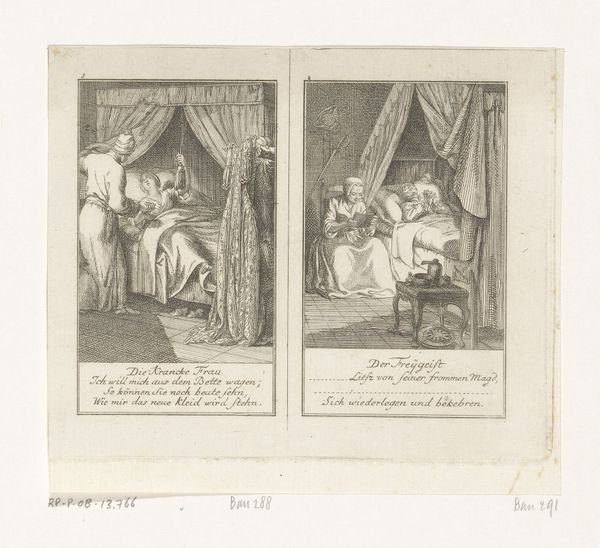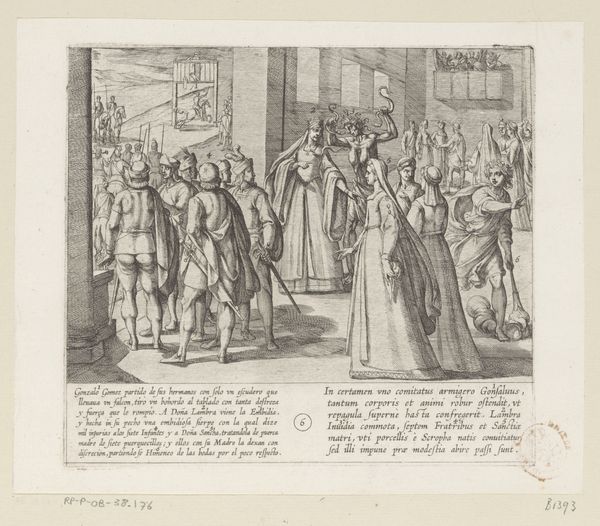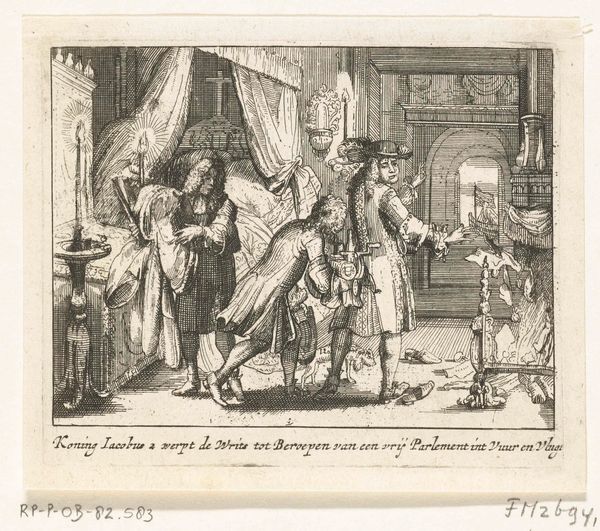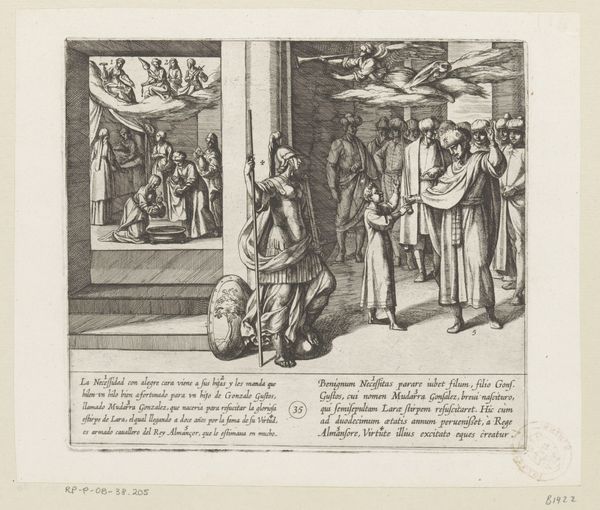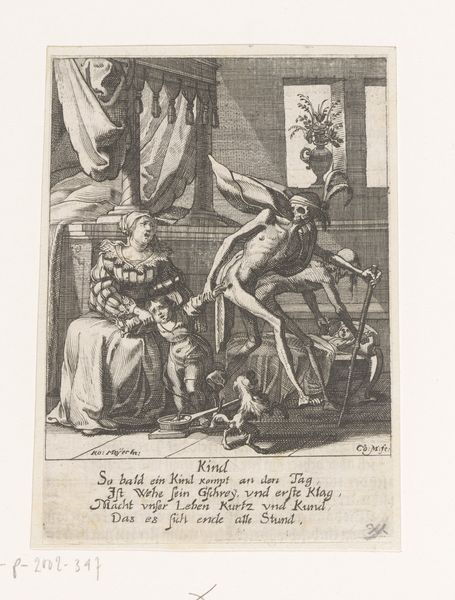
print, engraving
#
narrative-art
#
baroque
# print
#
figuration
#
line
#
history-painting
#
engraving
Dimensions: height 185 mm, width 206 mm
Copyright: Rijks Museum: Open Domain
Curator: Here we have an engraving by Antonio Tempesta from 1612, currently held at the Rijksmuseum. Its title is “De zuster van Almanzor troost Gonzalo Gustos," which translates to "The Sister of Almanzor Comforts Gonzalo Gustos.” Editor: Immediately, what strikes me is the dynamic tension created by the stark linearity and intricate detail of the lines. There is an almost theatrical sense of space despite the limited tonal range. Curator: Indeed. Tempesta's work exists in the historical context of narrative printmaking. Engravings such as this served a vital purpose: circulating stories and moral lessons to a wider public. This scene is extracted from a larger epic narrative, possibly of Spanish origin, focusing on themes of loss and consolation across cultures, showing Almanzor's sister attempting to console Gonzalo Gustos. Editor: I see the way he emphasizes gesture. The distraught posture of Gonzalo is in contrast to the rather stately presentation of Almanzor’s sister, creating a focal point but at the expense of depth in emotional expression. Curator: Consider the cross-cultural elements being represented. The portrayal, though likely filtered through a European lens, served as a means of engaging with different cultural histories. We must remember, too, the politics inherent in representing figures from different cultures in early modern Europe. Editor: The composition feels quite stagey, almost as though they are arranged in a scene with the backdrop revealing itself through the window. This almost enhances its artificial quality, reminding us that it's as much a construct of artistic intention as it is a historical depiction. Curator: Exactly. This engraving highlights how art serves as a stage for negotiating historical memory, personal grief, and cross-cultural encounters. How artists translated historical events through specific styles reflects the complexities of socio-political interpretation of that time. Editor: It truly is fascinating to consider this, noting how the medium itself plays with illusion and reality, all bound by this visual dance of black and white. Curator: Absolutely, viewing the narrative of the work as well as the historical background lends richer insight to the art work.
Comments
No comments
Be the first to comment and join the conversation on the ultimate creative platform.
